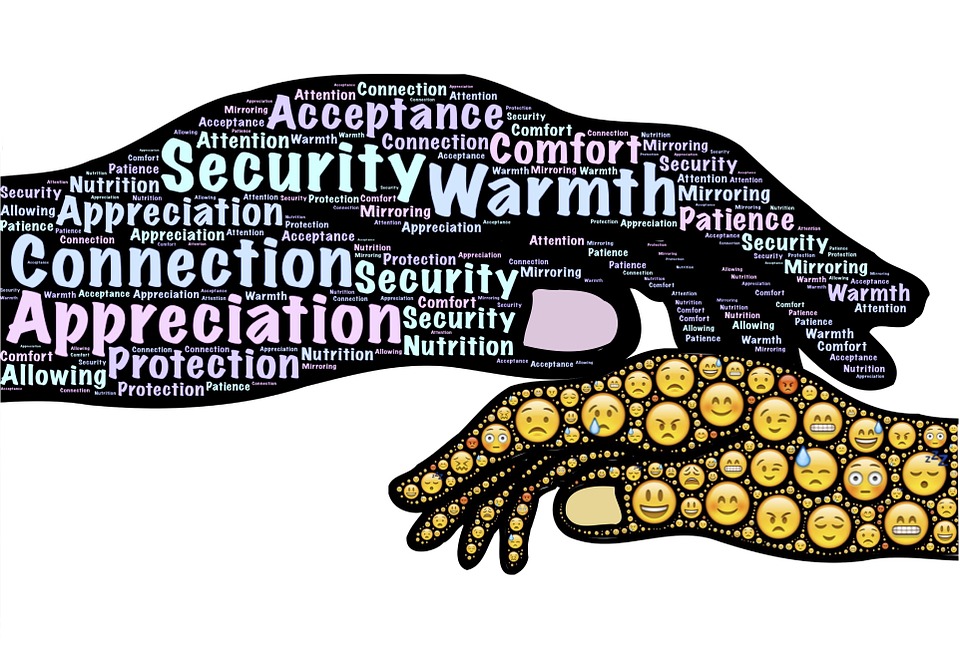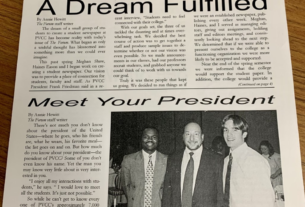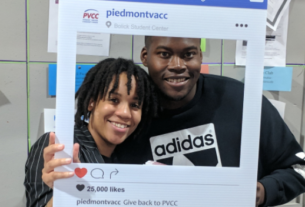Deliberating to Benefit the Future Generations
On March 25, around 25 students and faculty of PVCC gathered in the North Mall Meeting Room for a deliberative dialogue. The topic for this semester’s dialogue was “Youth and Opportunity: What Should We Do for Future Generations to Thrive.”
Prior to this event, a group of students and faculty met in room M249 on February 25 for a deliberative dialogue facilitator training. The group was coached on ways to handle the dialogue by ensuring that it does not escalate into an argument or debate, and by provoking opposing viewpoints if there is too much agreement.
The dialogue began with introductions by the organizers: Jennifer Koster, professor of English and Writing Center coordinator at PVCC, and Crystal Newell, the director of library services at PVCC. Before the official commencement of the event, Koster gave a land acknowledgement to the Monacan Nation who are the custodians of the land which PVCC is built on.
After the acknowledgement, a slideshow and video was presented in order to explain and introduce the topic and the itinerary of the dialogue. Koster gave great emphasis on the difference between a debate and dialogue.
“In a debate, each side states a specific opening position around an issue and argues against the opposing view. In a deliberation, people gather with an open mind to listen and learn about other perspectives. They weigh the benefits and trade-offs of solutions to difficult problems, and they share what matters most to them when they know they can’t have everything they want. Participants learn to see the people behind these often polarizing issues, and they come to understand that they aren’t entirely unlike the people they disagree with. Democracy requires us to work together and it requires compromise,” said Koster.
Once this was completed, the large group was divided into three smaller groups, each with a trained facilitator and a notetaker. They were separated into three rooms to begin the dialogue.
Each group began by going around the table with introductions, and their personal stake in the matter. After the introductions, each person took turns reading a possible action that could be taken from each option followed by its drawbacks from the given issue advisory. The first option was to equip people to succeed, the second option was to give everyone a fair chance, and the third option was to focus on economic security. Then, each group had 20 minutes to deliberate each option and the actions that could be done.
Participants were lively and engaged in the discussion, talking about the pros and cons and other solutions for each option. Whenever a group was in too much agreement, the facilitator would ask the participants to think about why someone might not have the same beliefs so that there is more than one perspective in the deliberation. To conclude the dialogue among the small groups, each group was given around 20 minutes to review and reflect on the group’s deliberations.
Following the conclusion of the small group discussions, all groups assembled back in the North Mall Meeting Room to share their thoughts and ideas. In the end, students and faculty alike agreed that it was a pleasant experience where they felt respected and heard. Some even continued their deliberations as they walked out of the room.Those interested in learning more about the recent deliberation topic may visit the issue guide page on the National Issues Forums Institute’s website where you can also learn more about deliberative dialogue.







